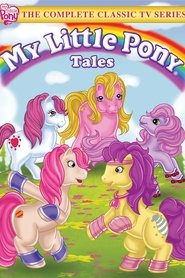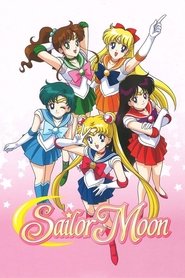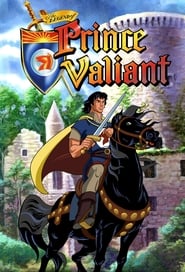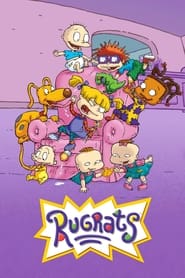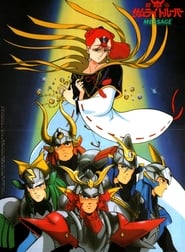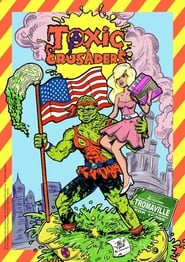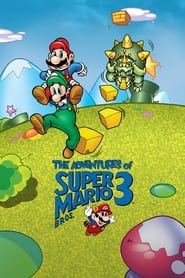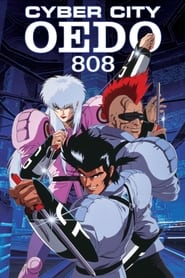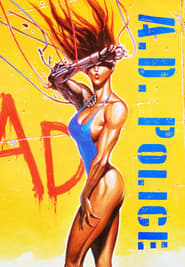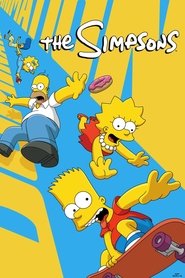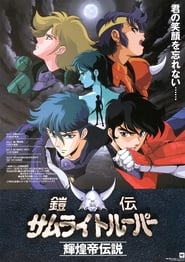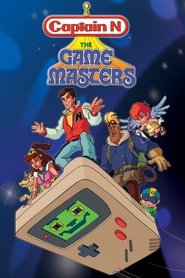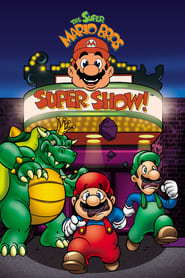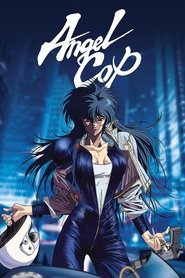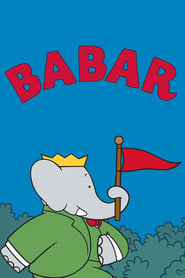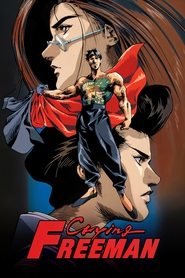New Animation TV Series on Free Services - Page 30
-
King Arthur & the Knights of Justice
1992
star 7.1King Arthur and the Knights of Justice is an American animated series. It lasted for two seasons and 13 episodes each. The cartoon was produced by Golden Films, C&D Entertainment and Bohbot Entertainment. The series was created by Diane Eskenazi and Avi Arad who were also executive producers of the series. Its first episode aired on September 13, 1992, and the last episode was on December 12, 1993. -
My Little Pony Tales
1992
My Little Pony Tales
1992
star 6.7Ponyland is full of excitement, if you know where to find it! Join the 7 Pony Friends—Starlight, Sweetheart, Melody, Bright Eyes, Patch, Clover and Bon Bon — for games, picnics, ice cream shops, roller derbies and even UFOs… nothing is off-limits when it comes to grand Pony adventures! -
Sailor Moon
1992
Sailor Moon
1992
star 8.4One day, Usagi Tsukino, clumsy 2nd-year middle school student, stumbles upon a talking cat named Luna. Luna tells her that she is destined to be Sailor Moon, "champion of love and justice", and she must search for the fabled Moon Princess. Usagi finds friends that turn out to be destined senshi as well, and together they fight to save the world from the certain doom brought upon by the Dark Kingdom. -
Rupert
1991
Rupert
1991
star 7.3The classic tales of Rupert Bear and his friends in Nutwood as they embark on magical worlds with enchantment, intrigue, and danger around every corner. -
The Legend of Prince Valiant
1991
star 6.3The Legend of Prince Valiant is an American animated television series based on the Prince Valiant comic strip created by Hal Foster. Set in the time of King Arthur, it's a family-oriented adventure show about an exiled prince who goes on a quest to become one of the Knights of the Round Table. He begins his quest after having a dream about Camelot and its idealistic New Order. This television series originally aired on The Family Channel from 1991 to 1994 for a total run of 65 episodes. -
Rugrats
1991
Rugrats
1991
star 7.6Focuses on a group of toddlers, most prominently Tommy, Chuckie, Phil, Lil, and Angelica, and their day-to-day lives, usually involving common life experiences that become adventures in the babies' imaginations. Adults in the series are almost always unaware of what the children are up to; however, this only provides more room for the babies to explore and discover their surroundings. -
Bubblegum Crash
1991
Bubblegum Crash
1991
star 5.8MegaTokyo 2034: The saga of the Knight Sabers continues. The group tries to find out who or what is behind the recent string of robberies, murders, and Boomer malfunctions which are somehow related to the creation of an advanced artificial intelligence. Furthermore, it seems that the Knight Sabers may be breaking up. -
Ronin Warriors: Message
1991
star 8.5A 300-year-old book is discovered which chronicles the adventures of the legendary Samurai Troopers... centuries before they happen! But what does this mean? Are the Troopers merely puppets in some cosmic play, acting out parts? Who is this mysterious Suzunagi, a mysterious girl who entices each of the warriors with their hearts' desire - salvation, new armors, freedom from a life of fighting. Why is she so interested in the troopers and their armors? -
Toxic Crusaders
1991
Toxic Crusaders
1991
star 5.9Loosely based on the 1984 B-horror comedy film The Toxic Avenger, Toxic Crusaders is a syndicated 13-episode animated series created by Lloyd Kaufman and Michael Herz. Like the source material, Toxie is a grotesque mutant endowed with superhuman powers, but is still a good-hearted and law-abiding citizen of the fictional town of Tromaville, New Jersey; the setting of most of Troma Entertainment's films. In a change from the films, the toxic waste mutated his mop into a sentient entity that sometimes battles enemies by itself or gives him ideas on how to solve problems. The villains include Czar Zosta, Dr. Killemoff, and Psycho, polluters from the planet Smogula who wreak ecological havoc with help from Tromaville's corrupt mayor, Grody. Bonehead, a street punk who bullied Melvin, joins them in the first episode. -
The Adventures of Super Mario Bros. 3
1990
star 7.6The Mario Bros., Princess Toadstool, and Toad protect the Mushroom Kingdom against the evil forces of Bowser and his seven Koopa Kids. -
Cyber City Oedo 808
1990
Cyber City Oedo 808
1990
star 7.7In the city of Oedo 2808 A.D., three Cyber criminals are given two choices, to either rot in jail or to join a special force of the Cyber Police to possibly get one more chance at freedom. For each criminal apprehended, and for each successful mission done, the state will agree to reduce their sentences. Lead by Hasegawa, the new recruits: Sengoku, Gogul, and Benton will bring some hard justice to Oedo, and possibly taste freedom once again. -
A.D. Police Files
1990
A.D. Police Files
1990
star 6.6MegaTokyo 2027: Relentless technological development has resulted in the creation of Boomers. These are artificially intelligent androids with the potential to free mankind from physical labor; but anything that can be used can also be misused. -
The Simpsons
1989
The Simpsons
1989
star 8Set in Springfield, the average American town, the show focuses on the antics and everyday adventures of the Simpson family; Homer, Marge, Bart, Lisa and Maggie, as well as a virtual cast of thousands. Since the beginning, the series has been a pop culture icon, attracting hundreds of celebrities to guest star. The show has also made name for itself in its fearless satirical take on politics, media and American life in general. -
Ronin Warriors: Legend of the Inferno Armor
1989
star 9A strange, silent warrior appears. When the Inferno armor is summoned to battle him, the mysterious warrior calls forth his own armor - a black copy of the Inferno armor! Now, the warriors will find themselves half a world away fighting once more to save humanity, but this time, from their own armor! -
Captain N: The Game Master
1989
star 6.9A teenager from Earth, is brought to another universe known as Videoland to defeat the evil villainess, Mother Brain, as foretold in an Ancient Prophecy. -
The Super Mario Bros. Super Show!
1989
star 6.9In 1989 the two most famous plumbers from Brooklyn burst out of the Nintendo game world and onto television screens across America. The Super Mario Bros. Super Show! aired weekday afternoons and brought Mario, Luigi, Princess Toadstool and King Koopa more thrilling adventures as cartoon characters. And if that weren't enough, each episode also contained live-action segments featuring Mario and Luigi running their Brooklyn plumbing shop - all before they were flushed down a drainpipe into the Mushroom World. -
Angel Cop
1989
Angel Cop
1989
star 6.1In the future, Japan is in the grip of terrorism, and the police have become as brutal as the criminals. The Special Security Force stands out, led by the fearless Angel, an elite agent who, alongside her partner Raiden, investigates a series of brutal murders. -
Ranma ½
1989
Ranma ½
1989
star 8.6Ranma Saotome, a teenage martial artist, and his father Genma travel to the 'cursed training ground' of Jusenkyo in China. There, despite the warnings of the Chinese guard, they fall into the cursed springs. From now on, whenever Ranma is doused in cold water, he turns into a girl and a cute, well-built redhead at that. Hot water changes him back into a man again, but only until the next time. To make matters worse, his father engages him to Akane Tendo, a girl who hates boys. -
Babar
1989
Babar
1989
star 6.2Inspired by Jean de Brunhoff and Laurent de Brunhoff's beloved children's books, this animated series tells Babar's life story from the elephant king's point of view, reliving his early days as a young pachyderm with important lessons to learn. -
Crying Freeman
1988
Crying Freeman
1988
star 7.4Yo Hinomura was an ordinary Japanese potter when a run-in with a Chinese mafia changed his life forever. Now an assassin for the 108 Dragons, Yo is the perfect killing machine. As a sign for remorse over his victims, he sheds tears after eliminating his targets. Because of this, he is infamously known by the Dragons and every crime syndicate in the world as the "Crying Freeman."
 Netflix
Netflix
 Amazon Prime Video
Amazon Prime Video
 Apple iTunes
Apple iTunes
 Apple TV Plus
Apple TV Plus
 Disney Plus
Disney Plus
 Google Play Movies
Google Play Movies
 Paramount Plus
Paramount Plus
 Hulu
Hulu
 HBO Max
HBO Max
 YouTube
YouTube
 fuboTV
fuboTV
 Peacock
Peacock
 Peacock Premium
Peacock Premium
 Amazon Video
Amazon Video
 The Roku Channel
The Roku Channel
 AMC+
AMC+
 Kocowa
Kocowa
 Hoopla
Hoopla
 The CW
The CW
 Vudu
Vudu
 Starz
Starz
 Showtime
Showtime
 PBS
PBS
 Pantaflix
Pantaflix
 FXNow
FXNow
 Tubi TV
Tubi TV
 Kanopy
Kanopy
 Comedy Central
Comedy Central
 Crunchyroll
Crunchyroll
 Microsoft Store
Microsoft Store
 Redbox
Redbox
 Sun Nxt
Sun Nxt
 ABC
ABC
 DIRECTV
DIRECTV
 Crackle
Crackle
 Fandor
Fandor
 Plex
Plex

